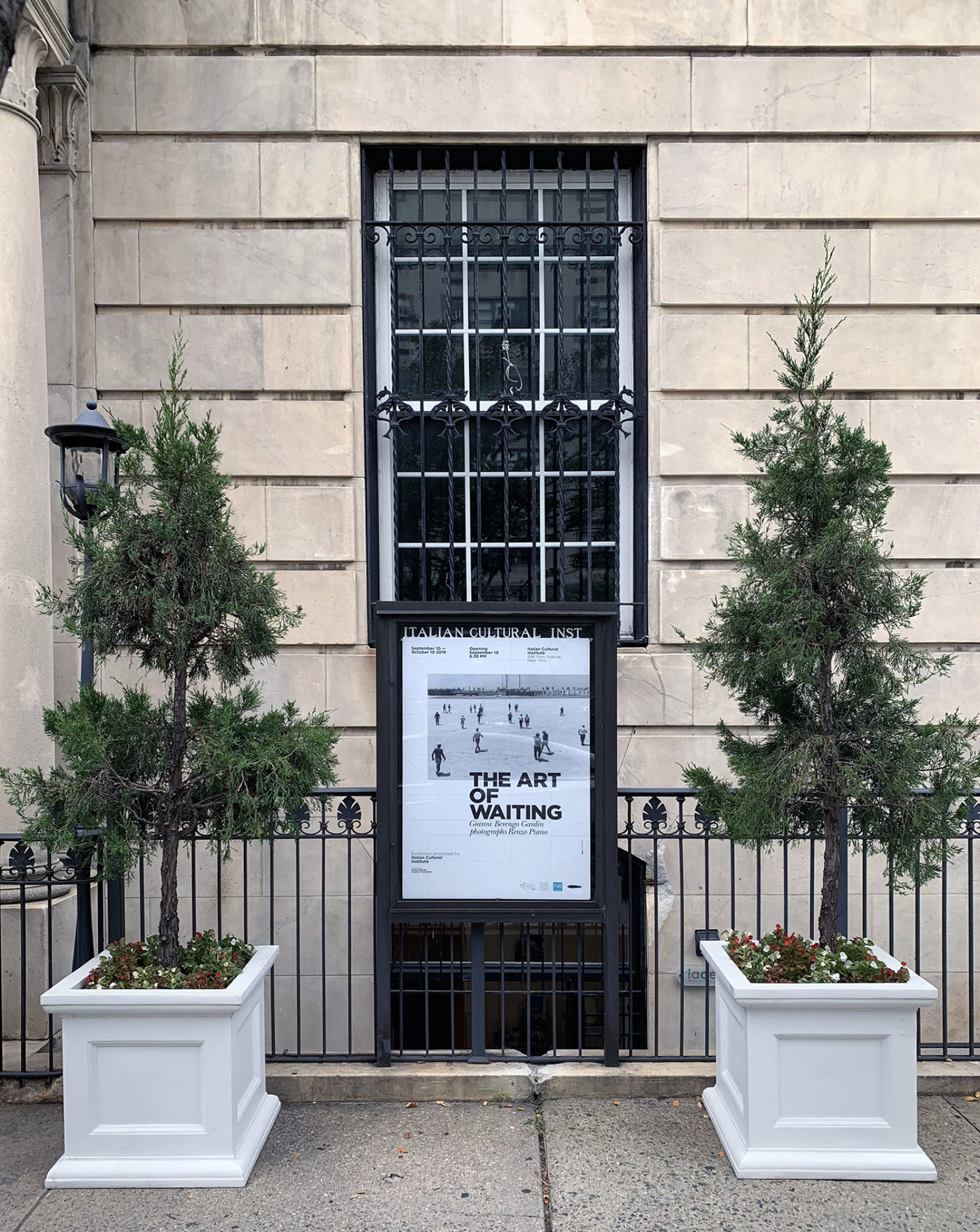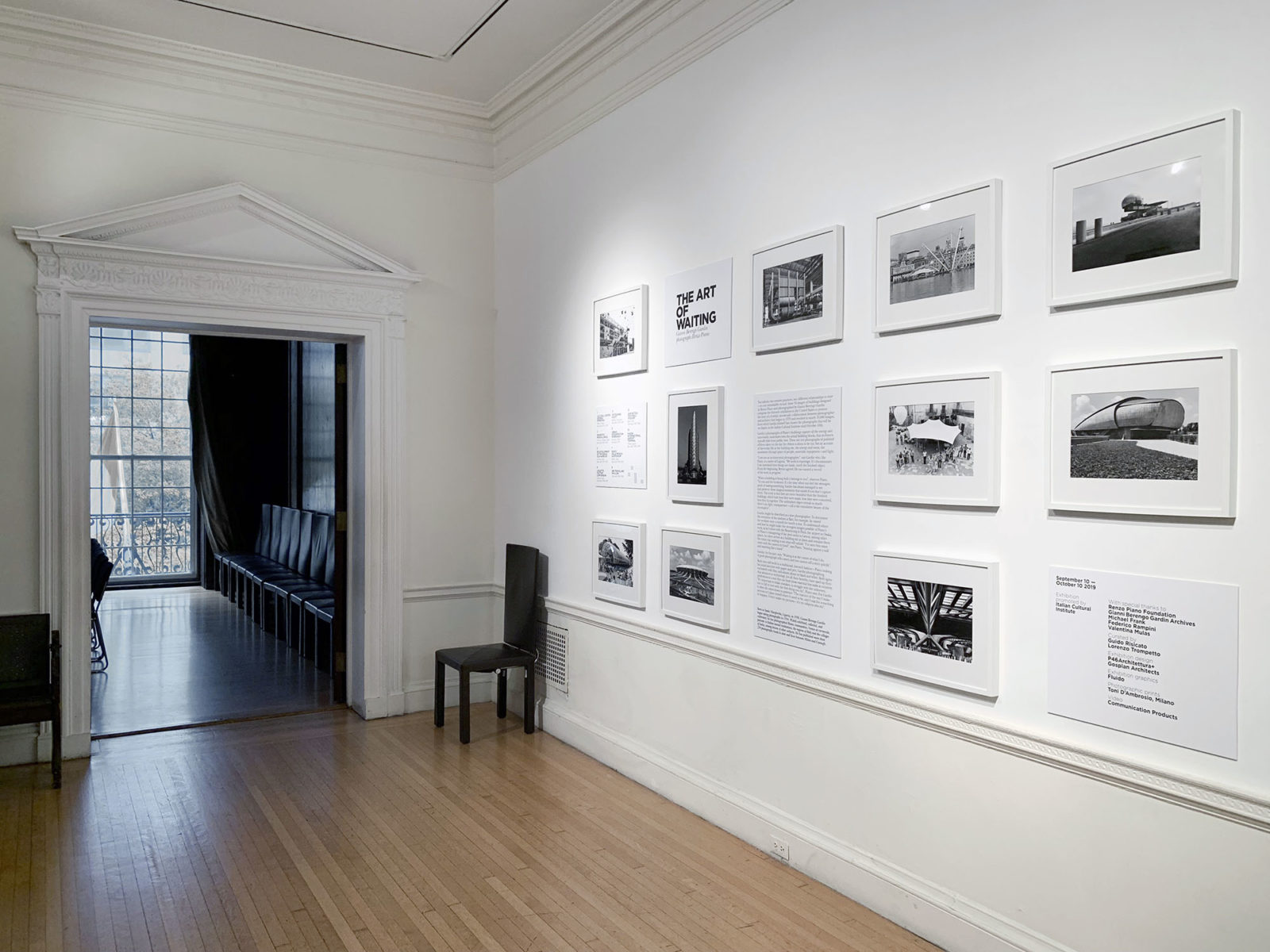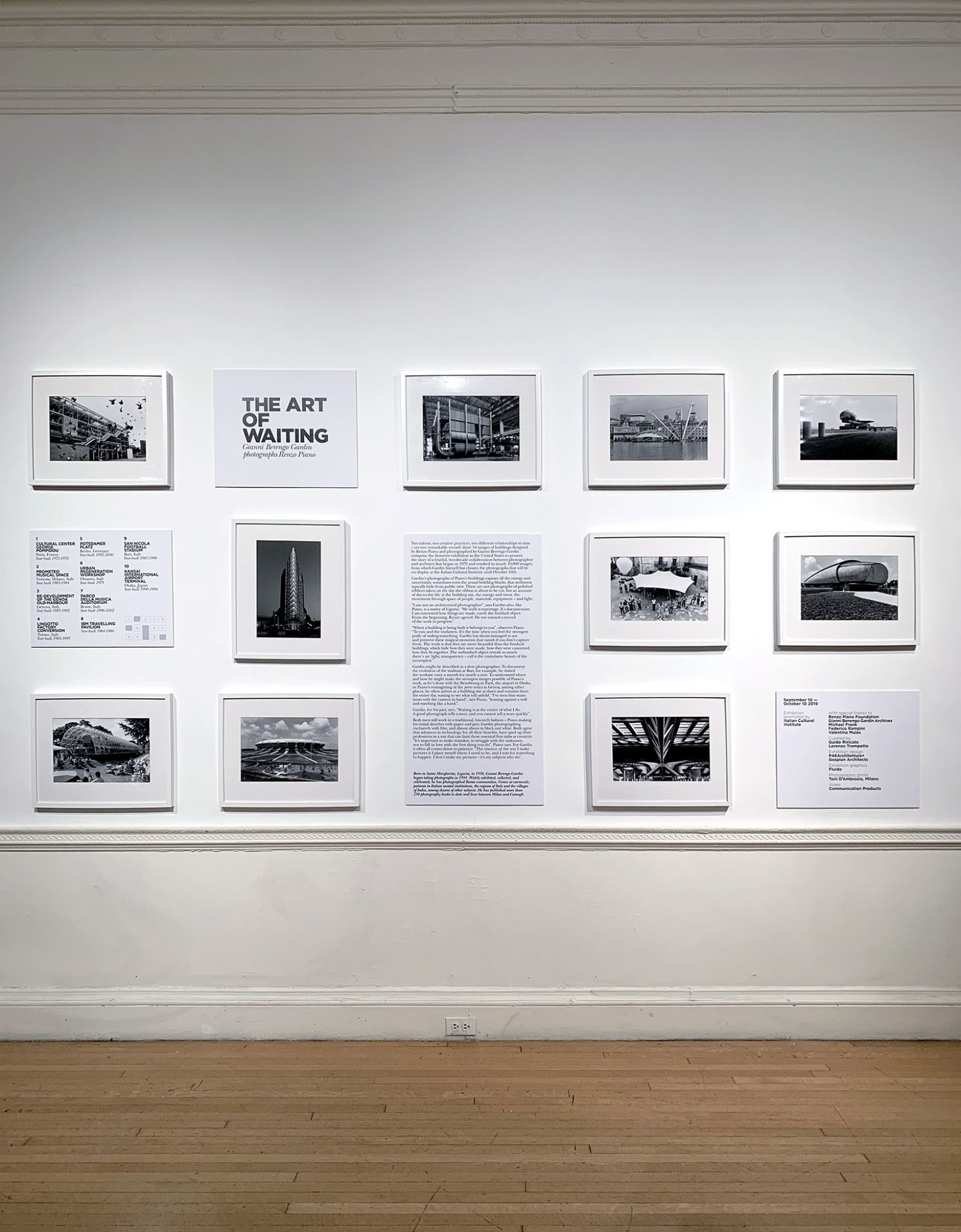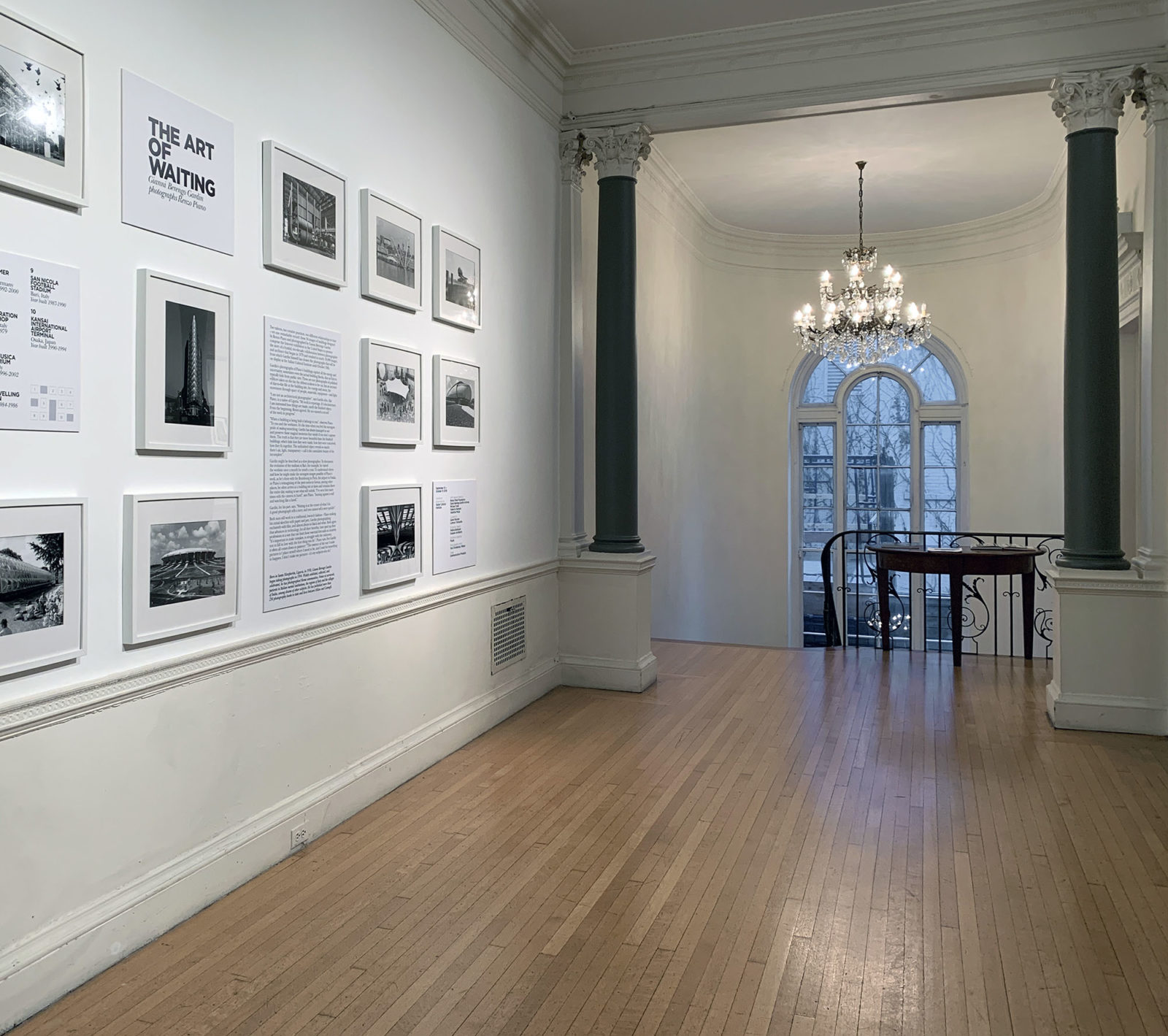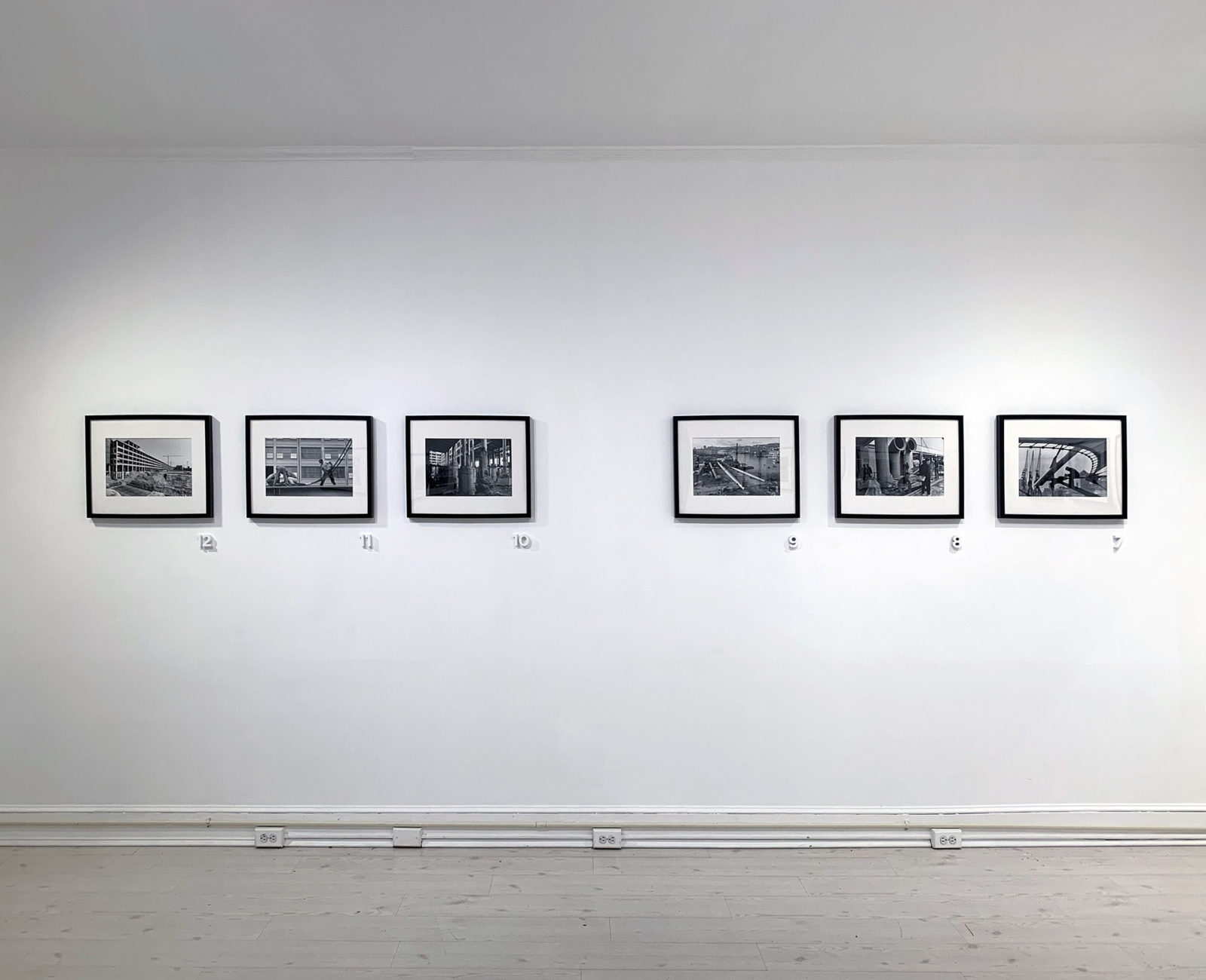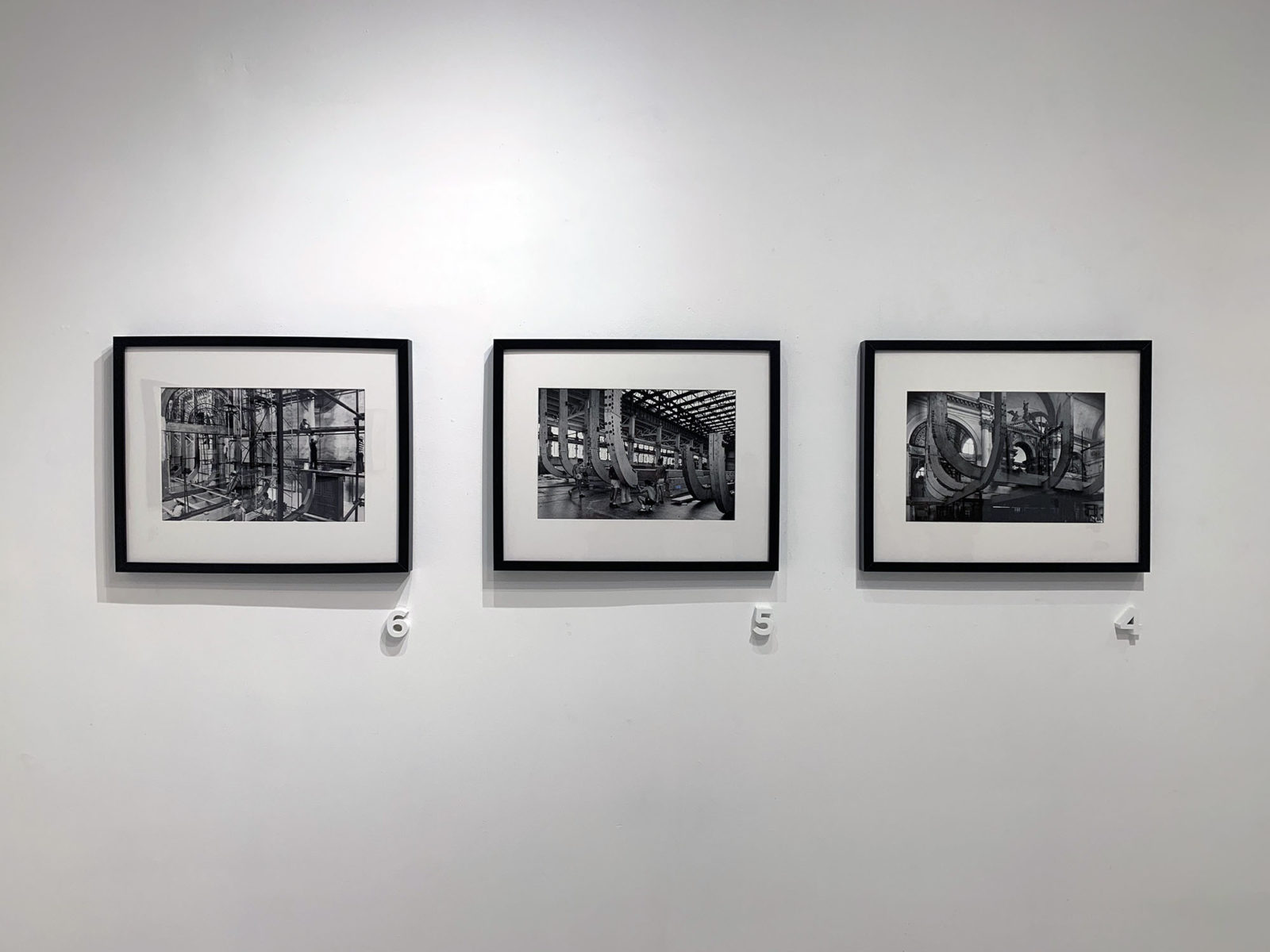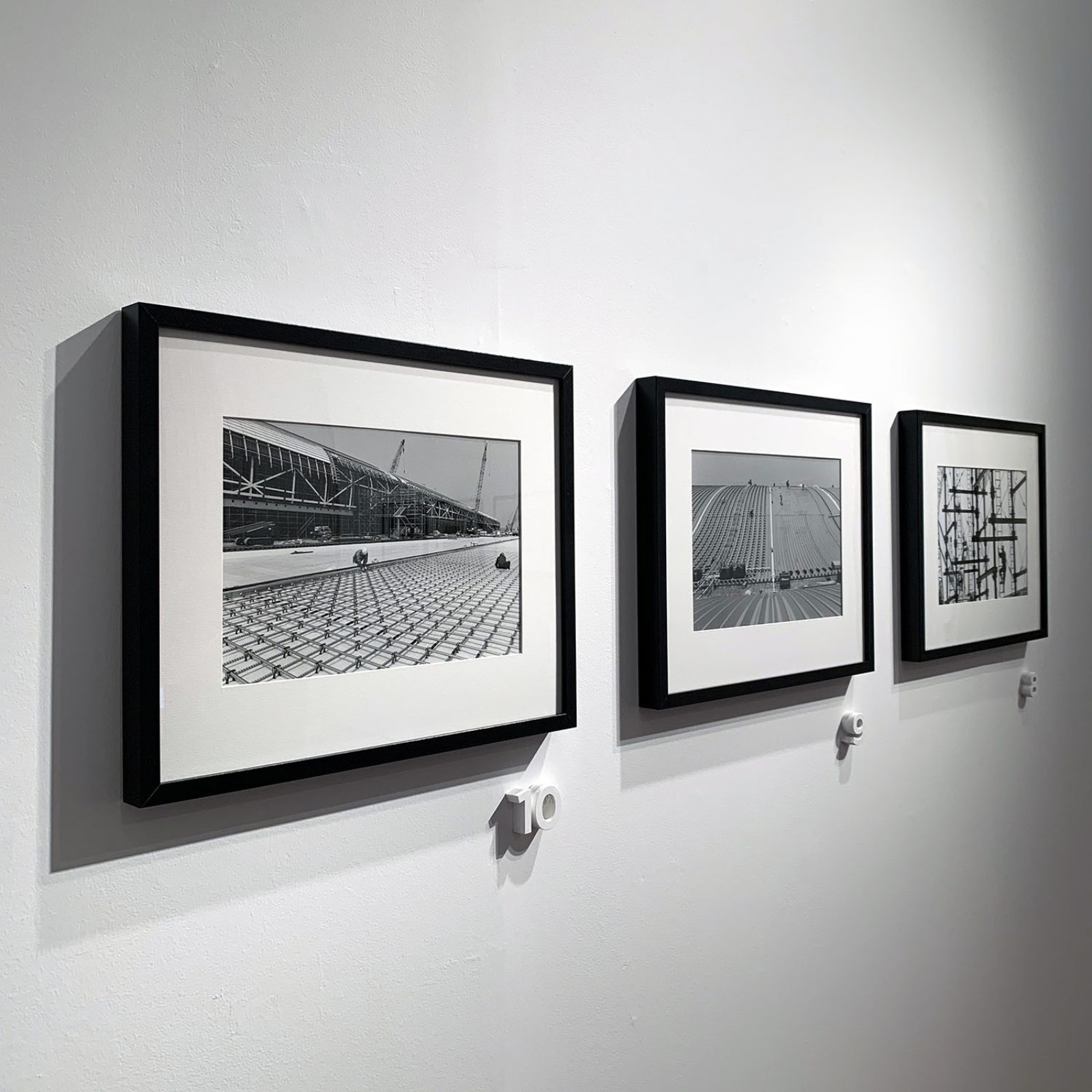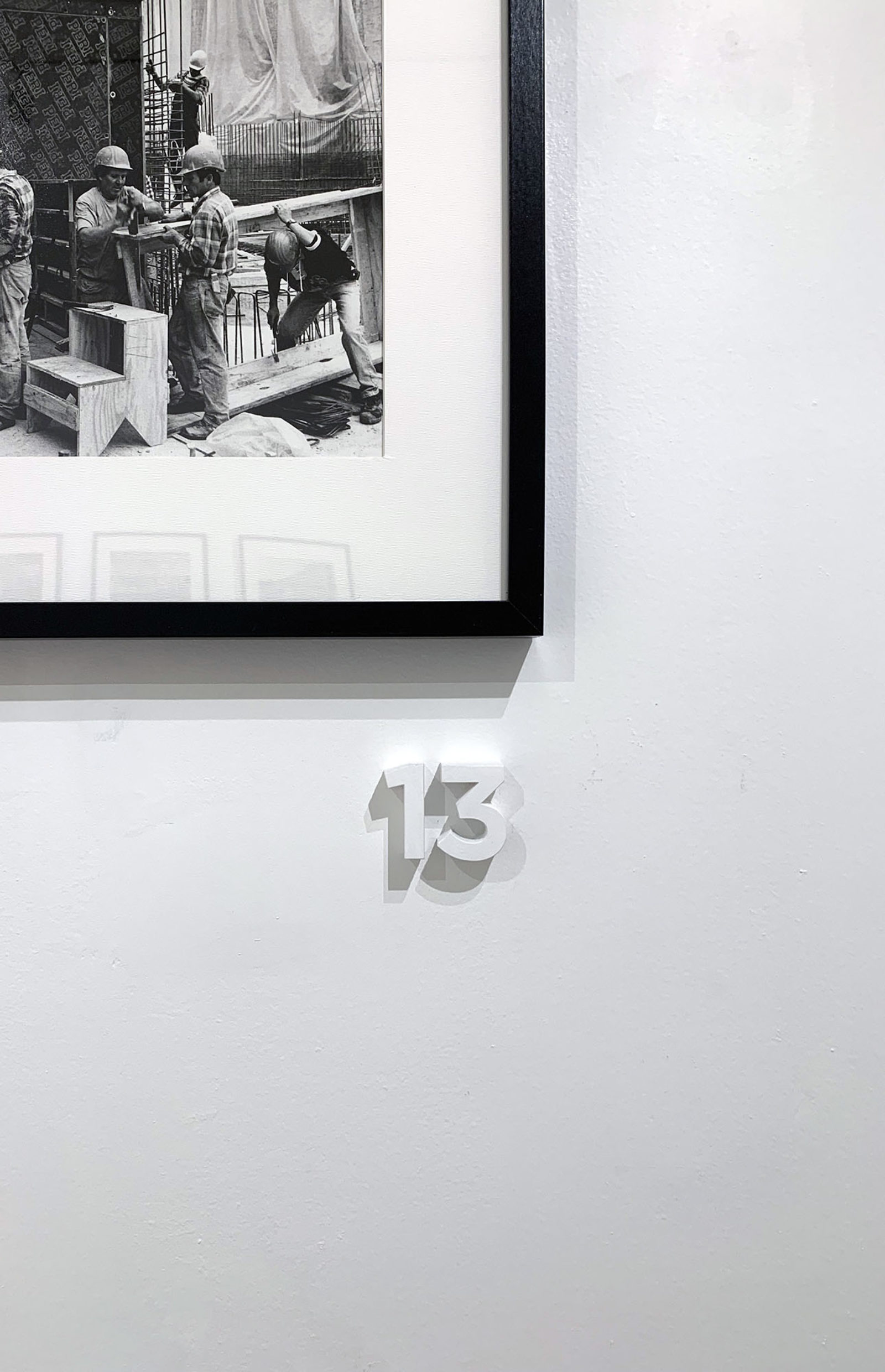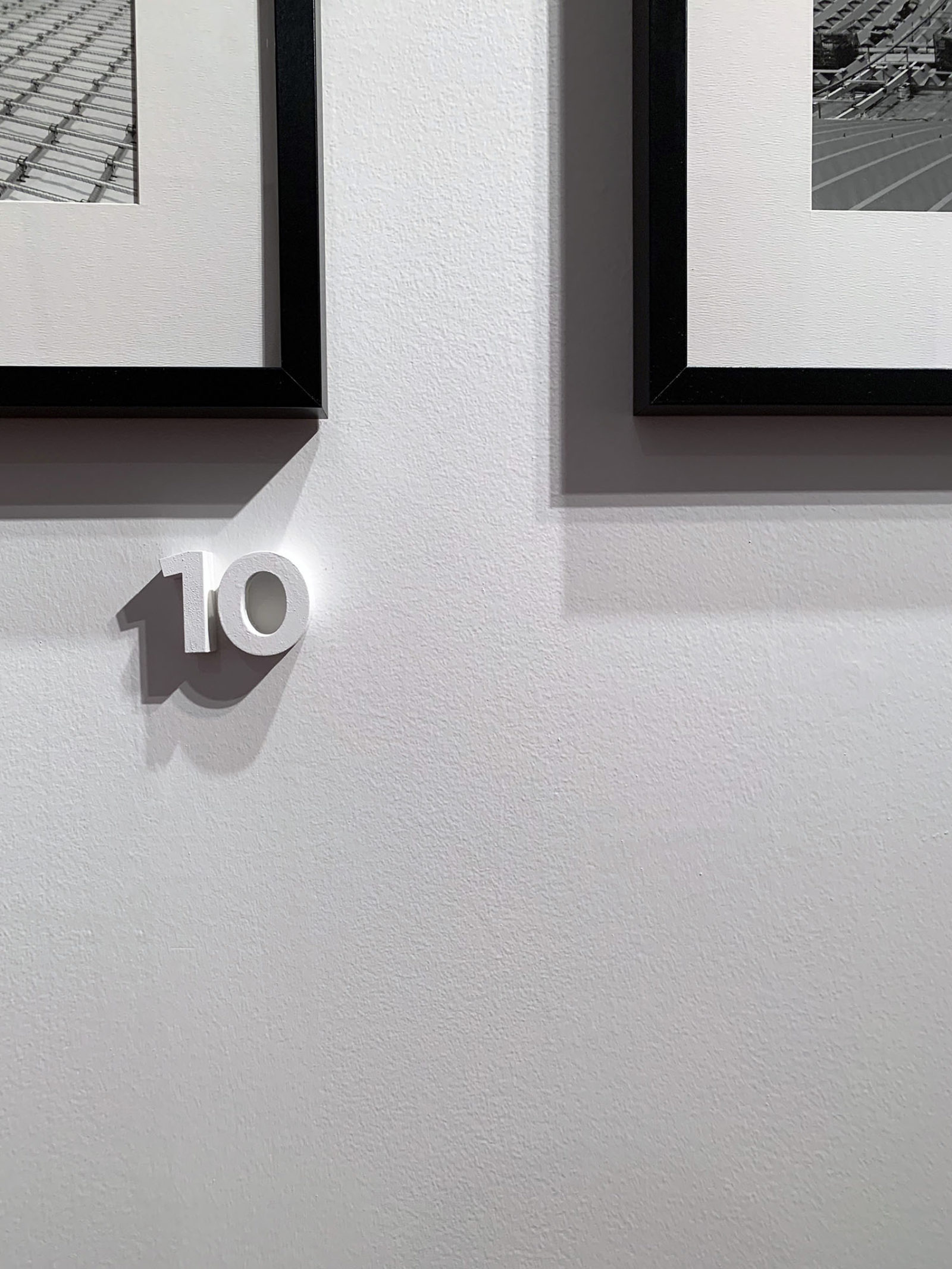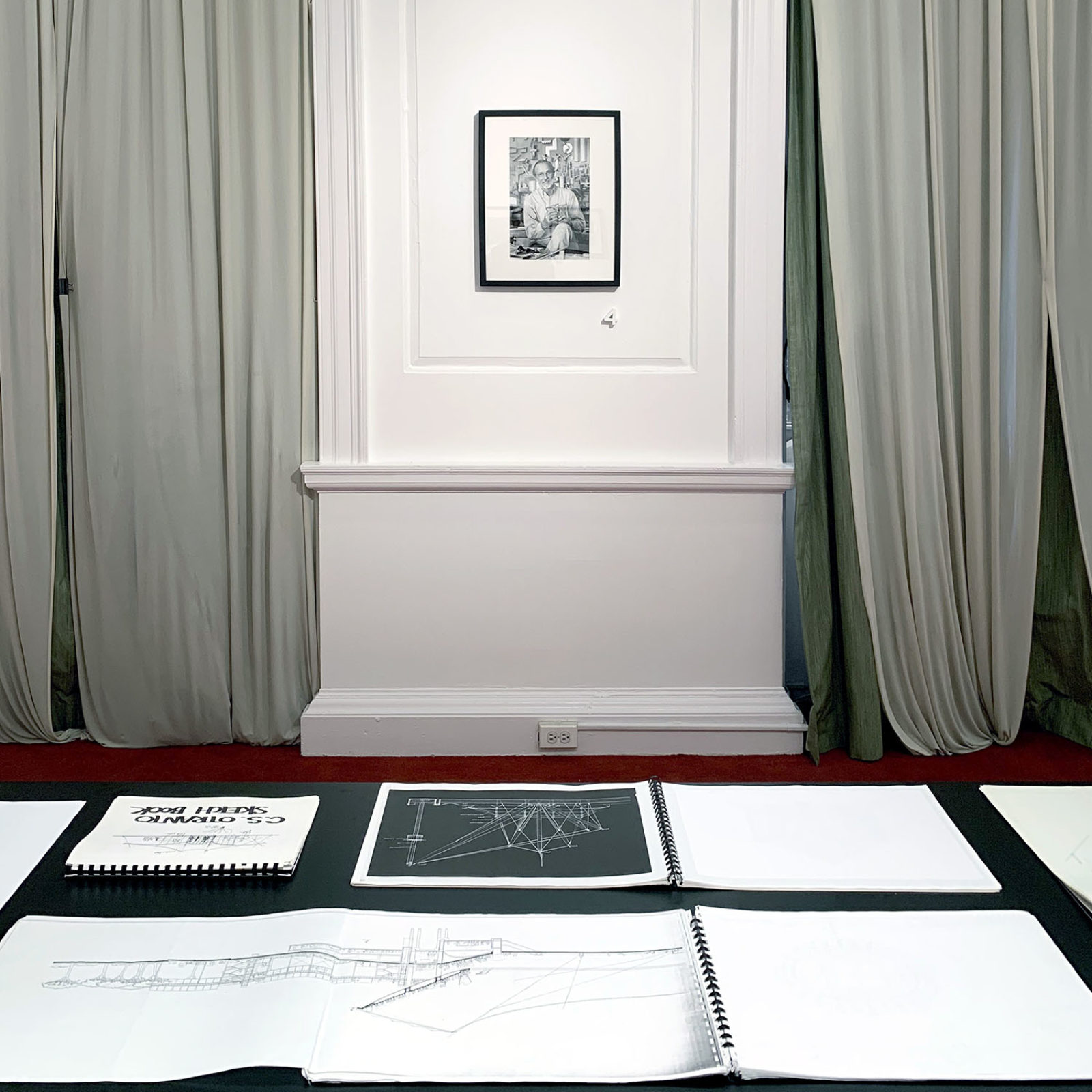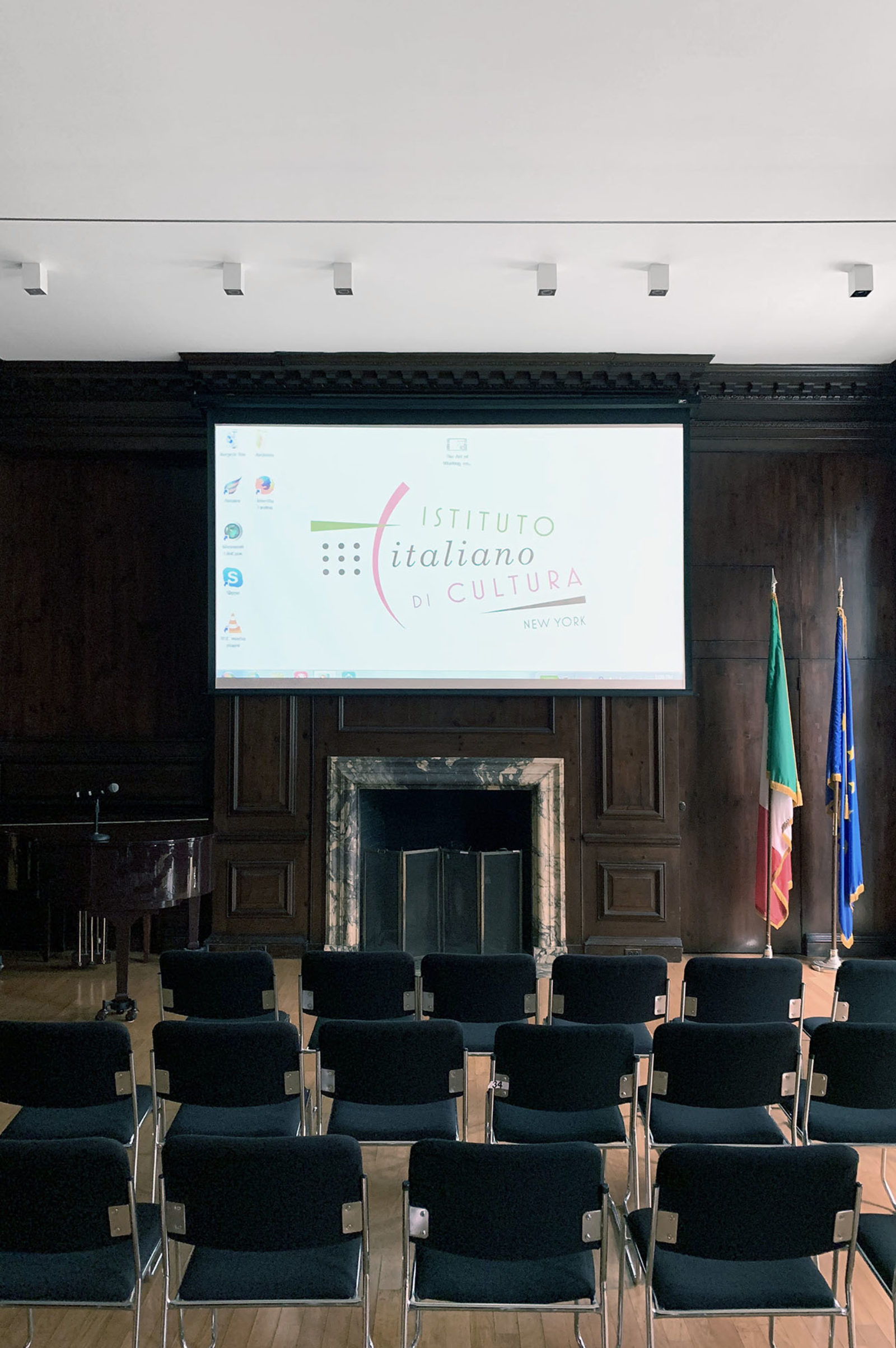The Art of Waiting
The Art of Waiting: Gianni Berengo Gardin photographs Renzo Piano
An exhibition at the Italian Cultural Institute, September 10 -October 10, 2019
Two talents, two creative practices, two different relationships to time—yet one remarkable record: these 33 images of buildings designed by Renzo Piano and photographed by Gianni Berengo Gardin comprise the first-ever exhibition in the United States to present the story of a fruitful, two-decade collaboration between photographer and architect that began in 1979 and resulted in nearly 10,000 images, from which Gardin himself has chosen the photographs that will be on display at the Italian Cultural Institute until October 10th. Gardin’s photographs of Piano’s buildings capture all the energy and uncertainty, sometimes even the actual building blocks, that architects typically hide from public view. These are not photographs of polished edifices taken on the day the ribbon is about to be cut, but an account of day-to-day life at the building site, the energy and sweat, the movement through space of people, materials, equipment—and light. “I am not an architectural photographer,” says Gardin who, like Piano, is a native of Liguria. “My work is reportage. It’s documentary. I am interested how things are made, rarely the finished object. From the beginning, Renzo agreed. He too wanted a record of the work in progress.” “When a building is being built it belongs to you,” observes Piano. “To you and the workmen. It’s the time when you feel the strongest pride of makingsomething. Gardin has always managed to see and preserve these magical moments that vanish if you don’t capture them. The truth is that they are more beautiful than the finished buildings, which hide how they were made, how they were conceived, how they fit together. The unfinished object reveals so much: there’s air, light, transparency—call it the cumulative beauty of the incomplete.” Gardin might be described as a slow photographer. To document the evolution of the stadium at Bari, for example, he visited the worksite once a month for nearly a year. To understand where and how he might make the strongest images possible of Piano’s work, as he’s done with the Beaubourg in Paris, the airport in Osaka, or Piano’s reimagining of the porto antico in Genoa, among other places, he often arrives at a building site at dawn and remains there the entire day, waiting to see what will unfold. “I’ve seen him many times with the camera in hand,” says Piano, “leaning against a wall and watching like a hawk.” Gardin, for his part, says, “Waiting is at the center of what I do. A good photograph tells a story, and you cannot tell a story quickly.” Both men still work in a traditional, low-tech way—Piano making his initial sketches with paper and pen, Gardin photographing exclusively with film, and almost always in black and white. Both agree that advances in technology, for all their benefits, have sped up their professions in a way that can limit those essential first stabs at creativity. “It’s important to make mistakes, to struggle with the unknown, not to fall in love with the first thing you do,” Piano says. For Gardin it often all comes down to patience: “The essence of the way I make pictures is I place myself where I need to be, and I wait for something to happen. I don’t make my pictures—it’s my subjects who do.”
Location: Italian Cultural Institute, New York, Unites States of America
Year: 2019
Client: Italian Cultural Institute – New York
Curators: Guido Risicato (P46architettura+), Lorenzo Trompetto (gosplan architects)
Exhibition design: gosplan architects, P46architettura+
Graphics: Fluido
Photographic prints: Toni D’Ambrosio, Milano
Video: Communication Products
Thanks to: Archivio Gianni Berengo Gardin, Fondazione Renzo Piano, Michael Frank, Federico Rampini, Valentina Mulas
PROJECT FEED
_________________________

